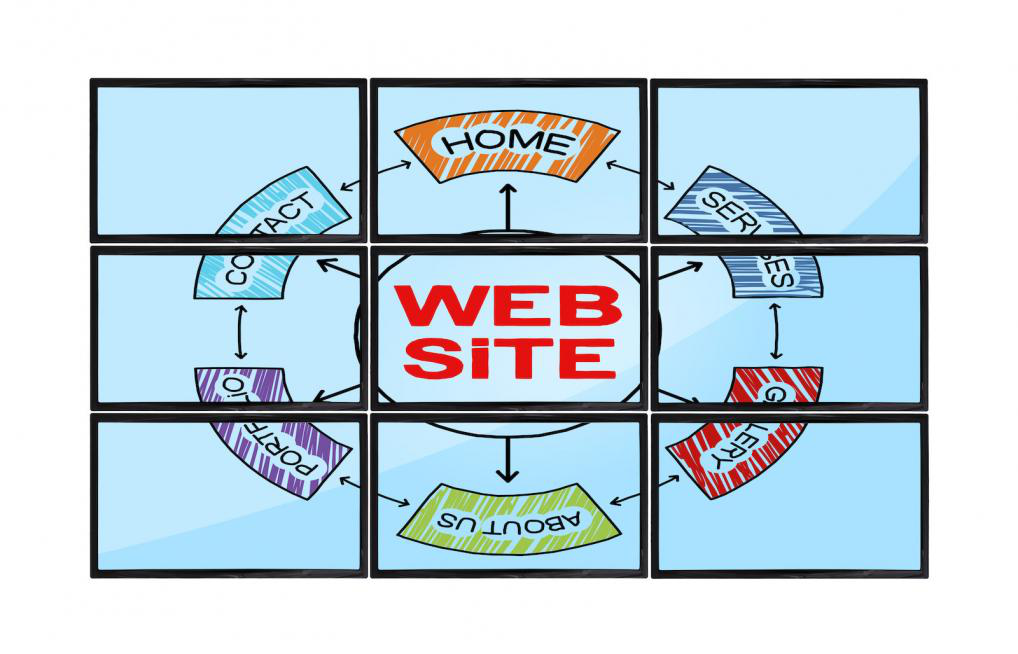In order to create the ultimate website, you will have to attract your target audience to it. in fact, a big challenge currently faced by many site owners is a lack of traffic. This is a major stumbling block that occurs repeatedly with many people who are keenly starting off with a new internet business. If your e-commerce website is not attracting the attention of the target audience, you would not be able to generate the kind of sales you want and desire.
Here, you will need to concentrate on using the right keywords and phrases for your search engine optimization (SEO) campaign. You will have to find the best keywords and sprinkle them all over your websites, blogs, and articles without making it seem as if you are stuffing them.
The Importance of Usability in Creating That Wow Factor
Apart from that, there is the very real issue of usability. Even if you successfully attract the right target audience, it won’t do you much good if the website is too difficult for them to navigate and they can find the products they want. Usability is considered critical for the success of your website and it should never be overlooked. In terms of importance, it is right up there with a targeted marketing plan. Good and simple usability can significantly improve the overall performance of your website and also increase the chances of success by helping to boost the sales and revenue figures of your business.
If you really want your website to be successful, it should both look great and at the same time provide a seamless user experience for everyone who visits the site. This is precisely why usability is such an important issue. If done right, it will easily set your site apart from the rest of your competition.
When it comes to web design, any features that can enhance your website’s usability should also be implemented in such a way that they make it much easier for visitors to find what they want. In fact, all such information should be available both quickly and easily to end-users.
There are many different ways that can help to improve the overall usability of your website. Let us take a quick look at a few such essential characteristics of some of the most user-friendly websites around:
It Should Be Accessible To All Types Of Users
The ultimate user-friendly site is one that can be easily accessed by everyone including the elderly, the visually challenged, and physically disabled individuals. These users generally use different types of screen-readers in order to access the Internet. You can check out the various accessibility guidelines that will help you to create the ultimate website that’s for everyone. You can apply these techniques to make sure that your website can be accessed by on-screen readers.
This will help make your website available to a much larger audience consisting of people who would not have been able to access your site via any other way.
It Must Have Mobile Compatibility
The world today is going through a very rapid digital evolution and an increasing number of people are shifting from desktop-based websites to smart device-based apps. People are now using their 4G equipped mobile phones and other devices to access the Internet. This is why the creation of a mobile-optimized website has become an absolute necessity now.
If you are not aware of the requirements for a mobile-optimized website, you should take a look and check exactly how your existing website will appear on a mobile device. In this respect, you can easily use Google’s mobile site tester or any other similar app to find this out. If you feel that your website cannot currently be accessed on a mobile device, it is absolutely imperative that you immediately create a mobile version of your website for ease of access. There are many web-based mobile website builders around that you can utilize for this purpose. However, you must not delay because you may be losing customers due to the lack of mobile phones using visitors to your site.
It Must Have An Extremely Well Planned Information Architecture
Merely stuffing your website with information will not get the desired results. This holds true even if it is value-added information that your target audience would love to see. This is because the organization, as well as the presentation of the information, is of equal importance for the success of the website. Unfortunately, many web designers and even marketers think that putting the information out is good enough and neglect its presentation.
This has become particularly important because there are a lot of websites out there that might be offering the same information and resources in order to attract your target market.
The user will almost always opt to go for a site that he is able to understand and get around instead of one where the data is not easily available. This is why you must always plan your website sections very carefully and add and/or subtract categories carefully in a way that users find very easy to use.
It makes a lot of sense to put yourself in your customers’ shoes and look at your site from their perspective. If you feel that looking for relevant information is difficult for you, know that they will feel the same. This is particularly important if there is a lot of informational content on the website.
Lack of Browser Consistency
Browser compatibility is also an easily overlooked aspect when it comes to website usability statistics. Some of the most well-known websites sometimes also succumb to this issue. This is not only bad from a branding point of view, but it also has a pronounced negative effect on the site’s usability.
Even though most browsers have evolved and become quite efficient, some inconsistencies still exist with regard to how they display a site. This is why it is so important to ensure that the site both appears and also behaves consistently across all the mainstream browsers such as Firefox, Chrome, Internet Explorer, IOS Safari and Opera. While it may not seem a big deal, tweaking a website to optimize it with all the major browsers out there can set it apart from the rest of the competition.
It Must Have Fast Load Times
If a customer is stuck at your website and the www stands for world wide wait, he will almost certainly log off. Nothing is more irritating for a website’s visitor than a site that simply takes ages and ages to load and slow speed is the primary reason why visitors leave a website. The more the lag, the lesser the chance of a conversion.
In other words, if your site does not load within the initial 4 to 6 seconds, odds are that the visitor will move on in search of other sites offering similar information. Apart from that, it will also have a significant impact on the search engine ranking of the site. Google’s latest algorithms are now capable of differentiating slow sites from fast ones and they will downgrade your site’s rankings if it takes too long to open.
If you are not aware of the speed of your site, you should periodically log in as a web user and check for yourself. Apart from that, you can also use various third-party website plugins to check your speed. If there are any widgets that are slowing the site down, you should just simply get rid of them. The effort is not worthwhile if it is adversely affecting your site’s performance.
Here, it is very pertinent to note that latency can have a very negative impact on your business Customer expectations have changed quite significantly in the past few years. The average visitor will only wait for a few seconds at most for your site page to load. If it doesn’t work, they will almost certainly navigate their way to a competitor’s site, and they will never visit your site ever again.
Your Web Design Should Not Overpower Your Products
If you have an e-commerce related site, your focus must always be on the products that you have placed on the site. If the design of your site is really awesome but the products are completely overshadowed it will defeat the whole purpose of the site. Such extravagance can actually do more harm than good because it will actively draw attention to the design of your website and thereby take away the focus from the actual products. A minimalist design that is more centered around been discreet can get the job done adequately enough. After all, the products won’t have to compete with the site for the attention of the target audience.
Highly Effective Navigation
The importance of good navigation can never be denied since it is a pivotal aspect of a website’s core usability. Using fairly simple HTML or JavaScript menus usually works best and it will also appear consistent on all the browsers and other platforms. Consistently using flash-based graphics will not only showdown the site, but it will also ask the user to update his browser. Few people are interested enough to do that. As a result, the user will simply find a more user-friendly site and that is the last you will see of them.
Clutter-free navigation is also of equal importance. You should try to actively limit the total number of menu items as much as you can. While a drop-down menu or even sub-navigation may work far better on a large site, that does not mean it will work with every site. If you have multiple relevant sections and pages you should try this approach otherwise you should aim to keep it as simple as possible. Some of the more common clutter-free formats include the following:
- Good search features that take the visitor to his designed page
- Multiple ways to explore all kinds of content
- Strong internal linking
- Highly informative headers and footers for individual sections and pages respectively
You Should Use Contrasting Color Schemes
The contrast between the background and the content of the website is one of the single most basic yet most important aspects of web design. If you overlook it, your products and other subject matter can literally fade into the background. Good contrast between the background and your products and text such as black text on a white background can go a long way in making your content both legible and easy to read as well.
But the lack of highly visible contrast, on the other hand, will end up making it very difficult for a visitor to read your content. Let us suppose for example, that your website has a vivid scarlet background. While it looks very eye-catching, if you were to use black colored text, it will not be easily visible. This will render the whole exercise futile, regardless of the value of the subject matter of the website.
You Should Use Simple Forms As Much As Possible
Forms are a very important component of any business website. They allow the visitor to interact with the site and either purchase a product or provide a lead for future sales. Your forms should have the following characteristics:
- Always use the correct labels for all the fields in the form
- Follow the best form design principles possible
- You should try to keep the number of fields to a bare minimum
- Offer tips and suggestions to fill the forms
- Always use correct validation
- The site should display an on-screen message on completion of the forms
Conclusion
Website usability always plays a key role in the success of the ultimate website. In this respect, it is every bit as important as web marketing and creative SEO techniques.
Good usability will always help to provide a uniformly seamless experience for your target audience and there before improve your chances of success overall.
- A Step-By-Step Guide to Designing a Mobile-Friendly Website - November 11, 2024
- How Content Marketing Enhances Your Website’s SEO Performance - November 11, 2024
- How to Pick the Perfect Color Scheme for Your Website Design - November 11, 2024





